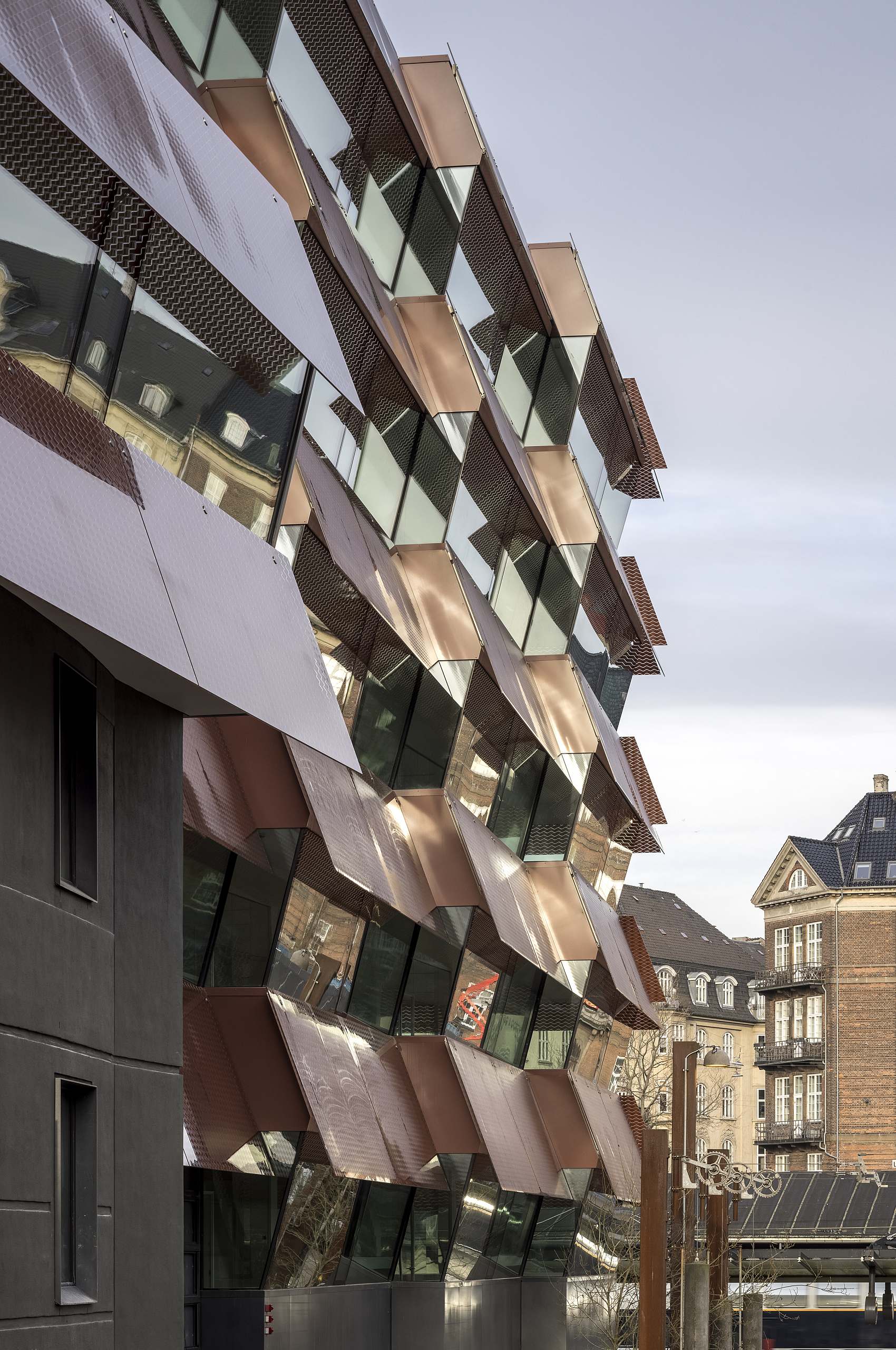Østerport is both old town, parks, shops, metro, station and on a hilltop. There are many scales in the surroundings and at the same time the new building is a renovation of existing buildings in the area facing Oslo Plads and down Folke Bernadottes Alle.

Building layout and urban space
The building Østerport 2 is made as low as possible towards Oslo Plads and larger towards the railway terrain, so that the scale in size fits the surroundings. The whole building is modulated in a rhythm that gives both horizontal and vertical proportions like the classical city.
Facing Oslo Plads, the building is pulled back from the corner and Østerport stationso that the station appears from all angles. The ground floor is the preserved shop section, now highlighted by opening up to the city with large windows in the shadow of the new canopies, creating an open and lively ground floor in conjunction with the new plaza with trees and seating. A real town house with Irma, Spejdersport, a café, as well as a fitness centre and a pleasant workplace.
The workplace and the urban space
The idea of the house is to create a workplace that reflects the daily life of the surroundings - the urban space, and that the glorious value of the surroundings is enjoyed by everyone inside the house during the working day. Therefore, all classical corridors are laid out to the facade and all seated work functions are pulled back from the facade, so that the view is democratised.The slope of the windows provides space from the inside like a bay window, and is therefore optimised for sitting and looking out.
Everyone gets a view, no sun in the screens, seating and meeting areas all around the building on the edge of town. A functional and atmospheric working environment in a radical yet simple new way - no boring corridors just customers, colleagues, city and view. The facade thus becomes an active image of the life inside and from the outside one sees not a static inventory and office life, but a dynamic workplace. The house is not a traditional consultancy with an introverted atrium. The city is the atrium of the house - an experience in everyday life for everyone inside and outside, with people at the centre. The façade and the urban space Depending on where you stand in the urban space, the design of the façade creates a constant change of tone, reflections and proportions in interaction with the green forecourt.
Reflection of the city
Normally office buildings reflect the sky, here the street, surrounding houses, trains and forecourt are reflected - the building becomes part of the urban space and city life by reflecting it. Bicycles, cars, buses and people with all kinds of errands right on Østerport. The new trees on the new forecourt are an integral part of the architecture. They link the house to the East and the Kastellet, creating a lovely space, and in the house the trees are reflected, dissolving the length of the house in the rhythm of the façade's canopies. The reflections alternate throughout the day as the facade faces south, while the light foliage of the trees shades in summer and allows light in winter. Energy sustainable, urban place-making and aesthetically changeable throughout the day and year. The geometry of the house is like canopies, which in addition to being solar screens, blend in tone with the interior white ceilings and absorb the surrounding multitude of geometries or colours.
Up close, the canopies are for the square and the shops and, from a distance, an interpretation of the many different roofs and decorations.
A beat, fine corners and a slope.
The house is not heavy or light, red or white, but both. And can therefore be seen in the context of the mill wings of Kastellet, the white exhibition building Den Frie, Monberg Thorsen's large imposing plastered facade, or the red and white station with its silver black slate roof in the sun and complementary to the yellow Nyboder.